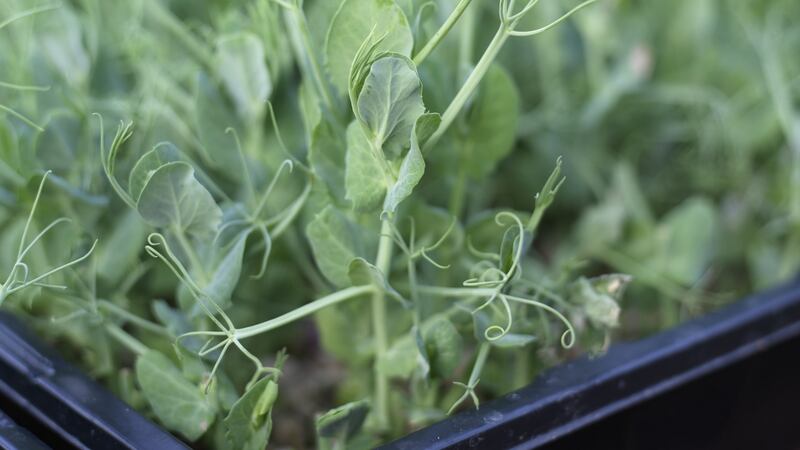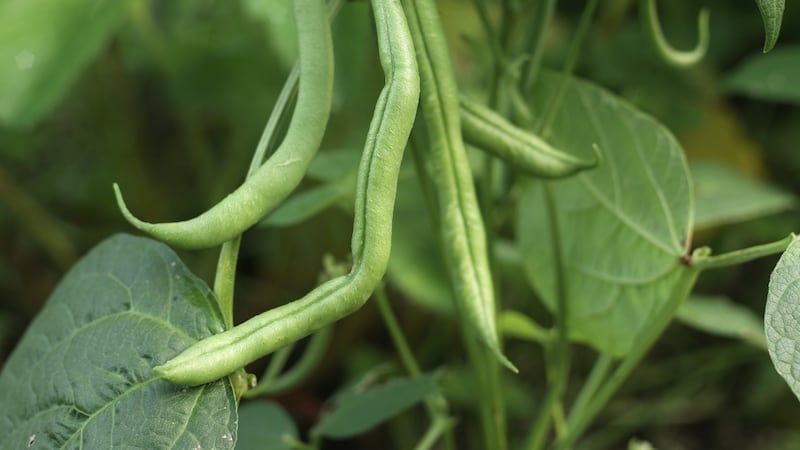Staying home and wondering about useful ways to make the most of your garden? Here’s a list of 10 nutritious, delicious, fast-growing vegetable crops, many of which can also be grown in grow bags, pots, tubs, window boxes or in some cases even seed trays placed near a sunny window. Many are also perfect for what’s known as succession sowing where you sow seed at two- to four-weekly intervals over a period of time to get a series of harvests.
But first a few tips: make sure to sow seed thinly (except for pea tips) and evenly into fertile, friable, weed-free, damp soil or a good-quality multipurpose compost; choose the brightest spot that you can find, well away from the shade and hungry root systems of established plants; keep emerging seedlings watered but don’t overdo it; watch out for late frost warnings and take suitable precautions when it’s forecast (a layer or two of horticultural fleece or just a few sheets of old newspaper will make a huge difference).
Once you see those baby seedlings starting to come up (and they will), you'll also need to protect them from slugs and birds (use garden netting ) until they get large enough to withstand attack. Within days (yes, days) you'll be able to start enjoying the very first crops of your own nutritious, home-grown food. Recommended seed suppliers include all good Irish garden centres, mrmiddleton.com , seedaholic.com, brownenvelopeseeds.com, irishseedsavers.ie , greenvegetableseeds.com , fruithillfarm.com and chilternseeds.co.uk


Pea shoots: The perfect crop when growing space is limited to a few sunny windowsills, this is one that young kids will love. Sow thickly into shallow trays filled with moist multipurpose compost and place them in a warm, bright room. Packed full of nutrients, the baby shoots will start to appear within days and can be harvested with a scissors to use in a salad, stir fry or just to munch straight from the tray. Dried peas are an economical way to source large quantities of seed; just make sure to soak them in water for a couple of hours before sowing. Succession sow for staggered harvests.
Cut-and-come-again salad leaves: A great way to make good use of very limited growing space, cut-and-come-again salad crops can be succession sown from March to September either outdoors or into pots and window boxes placed on a sunny window sill indoors (but one that's not too warm in order to prevent bolting). Many seed mixes are available from suppliers using different combinations of fast-growing leafy vegetables including lettuce, kale, rocket, cress, spinach, sorrel and mustards. To harvest as baby leaves, pick a few leaves from each plant and then wait for plants to bulk up again before each subsequent harvest.

Radishes: Another nutritious and super fast-growing crop that children can have great fun sowing and growing and which is perfectly happy in a pot or window box. The classic summer variety is the super fast-growing Cherry Belle, but there are many others to choose from including French Breakfast and Sparkler. Once the seedlings germinate keep the compost moist but not sodden (radishes dislike hot, dry conditions). Harvest when they're young, tender and juicy (cut the tops off and put them in a fridge, where radishes will keep fresh for several weeks). Succession sow from March to August.
Perpetual spinach (Betula vulgaris): Technically a chard and also known as leaf beet or spinach beet, perpetual spinach is one of those brilliantly versatile, leafy vegetables that's filled with health-enhancing nutrients and has a very long and productive cropping period. A fast-growing hardy annual, sow seed from April to July.
Tomatoes: Unless you have a glasshouse or polytunnel, concentrate on the faster-cropping bush varieties, many of which are compact enough to grow in a pot or hanging basket, such as Tumbling Tom Red, Maskotka or Outdoor Girl, all of which will produce a plentiful supply of small, sweet, nutritious fruits throughout the summer and early autumn. Use a good-quality multipurpose compost, give plants the sunniest, most sheltered spot you can find (but keep them away from gutters or roofs that might drip rainwater on to them), keep them well watered and liquid feed regularly once they start setting fruit. There's still just about enough time to raise plants from seed (sow indoors with heat). Alternatively, most good Irish garden centres (many of which offer a delivery service) and specialist online suppliers have young transplants in stock including quickcrop.ie.

Swiss chard: Fast-growing, colourful, versatile (you can use the leaves in an apple pie, salad or stir fry) and packed with vitamins and other health-boosting phytochemicals, this is easily raised from seed sown at this time of year and is happy to grow in a container. Rainbow Mixed is a great variety with stems in a range of rainbow colours. Treat as a cut-and-come-again crop and harvest regularly.

Potatoes: Plant as seed potatoes into fertile, moisture-retentive but free-draining soil, strong sacks or large tubs. First-earlies (examples include Orla, Casablanca, Colleen, Red Duke of York and Lady Christl) are the fastest to crop but don't store for anything as long as main-crop varieties. If you're growing the latter, make sure to choose a variety with good blight resistance such as Vitabella, Carolus, Alouette or Sevilla.

French beans: A great choice if you can give these heat-loving plants a sunny, sheltered spot or, better again, space in a polytunnel or glasshouse. For maximum productivity, go for a climbing variety such as Cobra, Helda or Hunter which can be grown in a large tub or pot. Where space is limited, choose a dwarf variety such as Annabel, Safari or Stanley.
Red Russian kale: Another quick-growing and hugely nutritious leafy vegetable with flavoursome, frilly, colourful leaves, it can also be easily grown in a container. Harvest as baby leaves to use in a salad or stir fry or allow to mature for larger, more robust-flavoured leaves.
Beetroot: A versatile root vegetable packed full of health-enhancing nutrients, beetroot is one of nature's superfoods. Recommended varieties include Pablo, Boltardy and Boston. Soak seed prior to sowing, thin out emerging seedlings to a 10cm spacing and harvest when young and juicy. Succession sow seed from now until late July for multiple crops.

Read this: Modern Plant Hunters – Adventures in Pursuit of Extraordinary Plants by the British biologist and garden writer Dr Sandy Primrose, a gripping account of the many modern-day plant hunters who have risked life and limb to seek out and conserve endangered plant species that are increasingly at risk from climate change, habitat loss, pests and diseases. While not always easy reading – the account of the British plant hunter Tom Hart Dyke's capture by Farc guerillas in South America is pretty gruesome, although eventually he escapes – it offers precious proof of the resilience, bravery and ingenuity of humankind.




















